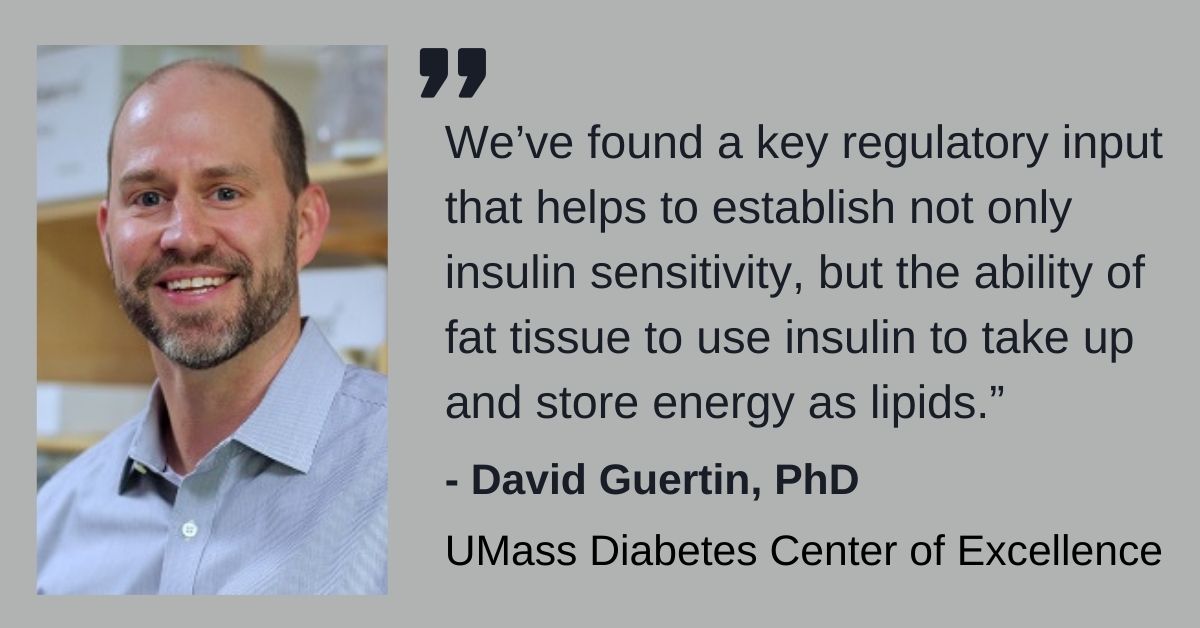Investigating Signaling Pathways That Respond to Insulin in Fat Cells That May Uncover New Strategies to Improve Insulin Sensitivity
Date Posted: Saturday, October 10, 2020
In people who are overweight or obese, storing excess nutrients in fat can protect them from developing insulin resistance and type two diabetes, at least to a point, before something breaks down. The study, published in Cell Reports, describes research conducted in the Guertin Lab, where a gene was knocked out specifically in a precursor cell population that gives rise to new fat cells, aiming to understand how to create a healthy fat cell. The scientists study a signaling pathway called mTOR Complex 2 (mTORC2).

PPAR gamma is considered the master regulator of fat formation because it activates many genes required to convert a precursor stem cell into a mature fat cell. It has many targets, and mTORC2 regulates a subset of those targets that are crucial for the production and storage of fat (called lipids) within cells. Within cells, altered mTORC2 signaling is associated with type 2 diabetes and appears to be most crucial for determining how a cell processes fats and lipids.
“We’ve found a key regulatory input that helps to establish not only insulin sensitivity, but the ability of fat tissue to use insulin to take up and store energy as lipids,” said Dr. Guertin.
For the first time, this establishes mTORC2 as a key regulator of a developing fat cell. During development, it appears to be required for many pathways that regulate how adipocytes (fat cells) manage lipids. Adipocytes are the primary energy storage sites in the body, and they play a crucial role in regulating the body's endocrine functions, which control the management of nutrients.
“The cells still become fat cells, but they’re smaller and have a disrupted lipid handling pathway,” said Dr. Guertin. “They also have some downregulation of proteins that respond to insulin. Now we’re trying to determine the mechanism that connects the mTORC2 activity to PPAR gamma.”
The Guertin Lab will continue to conduct additional experiments to determine how and why adipocyte function is controlled by mTORC2.
There are two general classes of adipocytes: white fat and brown fat. The main differences are that white fat is used for storing calories to be used during fasting, while brown fat stores calories to generate heat when the body is cold. When it’s cold, brown fat's lipid reserves are depleted, and its color gets darker.
The Guertin lab is interested in understanding the origins of different adipocytes and defining the signaling and metabolic pathways that control their development, distribution, and function.
